Spain

General Info
Last visitedAugust 2024
FoodYou're in Spain, get used to eat tapas. Before lunch or dinner Spaniards use to go to the nearby bar have a chat with their neighbours and have a couple of small plates with chorizo, cheese, sardinas, boquerones, tortilla or whatever else is exposed in the glass case on the bar. For breakfast you have a café con leche and a croissant. Lunch is served between 1:30pm and 4pm, dinner after 9pm until far after midnight. Who goes for dinner at 8pm is probably the only one in the restaurant. Locations with international clientele are the exception, of course. Paella is a dish to be mentioned, seafood combined with chicken or lamb on rice flavoured with saffron. Fish dishes are as common as meat. If you are a meat lover, have a steak in a churrascaria, they are delicious.
TransportSpains bus and train system is fairly good. The slow trains which are usually late are steadily being replaced by the high velocity railway system called AVE. Tickets on AVE are not cheap, you pay about 60 EUR one way fare from Madrid to Sevilla, which might be more expensive than a flight. But you are travelling from downtown to downtown and you don't have to queue to be scanned and there's hardly any delays. Madrid's metro network is as dense as the one of Paris or London. The metro is connecting Madrid's airport with the city. Have your own car or hire one, in order to be independent.
Do...have a beer or a glass of wine and order some tapas at lunch or before dinner, they're delicious.
Don't...have lunch at noon or dinner at 6pm.
Barcelona
Its geographic location is perfect: at the sea, close to the mountains, not far away from the rest of Europe. Gaudí has given the city its cultural note. Park Güell, Casa Batllò and Milà and of course 'La sagrada família': his masterpiece which is still under construction surrounded by cranes. Stroll around the Rambla in the evening hours and have a drink at Plaza Reial.
Madrid
Metropolis is written on an art nouveau building at the junction Alcalà - Gran Vía, and that's what Madrid is. The capital shows its grandeur at Gran Vía with its buildings and roman monuments on their roofs, at Castellana its large boulevard, plaza España, Mayor and Puerta del Sol. Its mascot is the bear looking for honey. The city is vibrant 24 hours a day. At weekends traffic jams at 3am are worse than at 9am or 8pm when people go to or come back from work. If you go to Madrid just for sight-seeing, then you might be disapointed. Have a siesta in the afternoon and save your energy for the night-time. Stroll around Plaza Santa Ana where loads of people are sitting outside having Cerveza and Tapas, kids are playing football and dogs running after each other. Explore the side streets north of Gran Vía (la Chueca) but make sure your camera and rolex are safe in your hotel room. Who is interested in painting art should not miss 'Museo del Prado' a museum nearly as extensive as 'Le Louvre' in Paris. 'Museo Reina Sofia' is another interesting museum. Use the metro to travel around. It's network is not less extensive than the one in London or Paris. Puerta del Sol has an extensive range of all sort of accomodation.
Alicante
Mediterranean coastline urbanized to the last.
AlicanteAlicante has a large cargo port and is overlooked by a castle. Below the castle hill is the picturesque old town, the Barrio Santa Cruz. Its winding streets are worth exploring.
Andalucia
Sun, the sea, beaches, snow capped mountains, beautiful cities and Spain's cradle of Flamenco dance and music.
GranadaIt's famous Alhambra, a masterpiece of a Moorish castle.
MalagaA seaport.
RondaA white hill town divided by a deep gorge.
Sevilla...is very touristy, indeed worth a stay of 2 or 3 days. Its cathedral, the Moorish real alcazar, Plaza de España and many more landmarks shall be visited. If you have the opportunity to attend a Flamenco performance your mission is accomplished.
Cabo de Gata and North-Andalucian coastCabo de Gata is probably the driest place in Western Europe. Extremely charming is the remote fishing village of Las Negras. The beach is stony, but the white houses, small restaurants, hippies and fishermen give the village a special character. Such places are few and far between on the Mediterranean coast.
Aragon
ZaragozaIt's towers of the Pilar Church at river Ebro is still somwhat provincial even though a hughe railway station has been built and the highways are even wider than the ones in Madrid.
Asturias
Asturias is part of the Cantabrian coast. The climate is mild, the vegetation green whereas the rest of Spain is suffering from heat and drought. There's numerous bays along the coast and quite some historical towns. A speciality of Asturias is the way of drinking cider which is called sidra in Spanish. Sidra is served in bottles tapped with a cork. Waiters walk around and fill glasses with a mouth full of sidra. To make it sparkle they hold the bottle as high as possible and the glass as low as possible in order to pour the brew in the glass. A good waitor does not waiste a drop. Nevertheless cider pubs are always damp, the floor is sticky and it smells like fermentation.
GijónIt's a city at the sea with a big yacht harbour. In the evening hours cider is flowing freely.
LlanesA small fishing town at an esturay mouth. There's some nice beaches nearby. During summer holidays the town nearly overflows with people. It's difficult to find some accomodation if not booked ahead.
Balearic Islands
Mallorca
Even though Mallorca is a German outpost there's some spots which are still authentic Spain.
El ArenalAvoid that place unless you like Ballermann parties.
Ibiza
Ibiza is famous for its parties. There are some wide beaches such as Platja d'en Bossa or Ses Salines where having drinks in its noisy beach bars and people watching is as interesting as sunbathing and swimming. Many people pilgrim to Sant Antoni to watch the sun set at Café del Mar. The town is at the North-West coast half an hour away from Eivissa by bus. Some nice bays need to be explored like Cala Xarraca, Cala Comte or Cala d'Hort, latter facing the rocky island 'Es Vedra'.
Eivissa (Ibiza)A mediterannean town. The cathedral is overlooking the port. Its plazas inside and outside the fortification are packed with people dining outside after sunset. A place where you could spend much more than just a week.
Formentera
Ibiza's neighbour island. It is small. It is quiet. It has some beautiful beaches and an interesting town 'Sant Francesc'. Explore it by bicycle. The ferry takes about 45 minutes to connect Ibiza with Formentera.
Canary Islands
Gran Canaria
Gran Canaria has two faces. The dry touristy east and south cost with Playa del Inglés and the dunes of Maspalomas at one side and at the other the mountainous middle, the green west-coast and Las Palmas which is still under control of the Canarians.
Las PalmasA vibrant city on the North of the island. It has a well frequented city beach and a malecón along the beach which gets crouded in the evening hours. The other side of the city consists of a port and its corresponding industry.
MaspalomasThe dunes of Maspalomas are in fact impressive. You feel like being in the middle of the Sahara desert.
Playa del InglesA tourist stronghold which can easily be bypassed for all those who are not really interested in beer parties.
Puerto RicoAnother touristy spot frequented by wealthier foreigners.
Lanzarote
The volcanic island with dozens of cones and black earth. Scenic is the valley of vineyards called La Geria, scenic is the volcanic Parque Nacional de Timanfaya where you feel like being on another planet. César Manrique has shaped the island with his architecture and contribution to urban development. His museums, caves and gardens are very worth a visit. Famous for their location underneath steep cliffs are the Papagayo beaches.
Puerto del CarmenProbably the largest tourist resort on the island. Many Irish pubs and its Irish community ensure a good atmosphere. Folk bands perform every night.
Playa BlancaMore elegant than Puerto del Carmen. Main attraction is its seaside walk with shops, bars and restaurants.
La GraciosaNeibouring island. There are no paved roads. The walk to scenic Playa de las Conchas takes an hour. Best means of transport is the bicycle.
Cantabria
It's located in the east of Asturias and has the same climate and geographic characteristics.
Cuevas de AltamiraTo be mentioned beforehand is that the original site is not accessible by the public. Nevertheless it's worth a visit. The cave which dates back to stone age has been rebuilt. The paintings which have been created by their residents are fascinating. Apart from the rebuilt cave there's numerous exposition rooms. The exposition is based on latest technology.
SantillanaA town which recalls the dark ages if there weren't that many tourists strolling around.
Catalonia
There's mountains, there's the sea. Barcelona Madrids rival city. It's the closest province to the rest of Europe. Catalonia is famous for its Cava a sparkling wine. It is home country of artists like Gaudí and Salvador Dalí. It's handicap for Spanish speaking people is its proper language, Catalan. The beaches of Costa Dorada from Sitges to Salou and Cambrils are wide and urbanized. Further south towards the Ebro Delta they are getting smaller and the nearby towns too. A footpath leads along the coast from bay to bay.
GironaHas a medieval center which is not in the best state anymore. A romantic place is the dried out river basin at the monastery Sant Pere Galligants. The facades at rio Onyar are picturesque. Another sight is the cathedral with its mighty nave.
SitgesA hot spot for queer people. Its scenic church and castle are situated on a rock at the end of the city beach.
TarragonaBarcelona's little sister has a broad boulevard also called Rambla, a cathedral and an Roman amphitheater.
Tossa de MarCharming town at Costa Brava. There's a long beach and some small bays in town. A rock and a castle on top are at the Southern end of the city beach. The water is crystal clear.
Castilla-La Mancha
It is dry ochraceous land with hills and scattered settlements. Roads are dead straight paved on the hilly ground. From time to the other a huge Osborne bull appears on the horizon the emblem of Spain.
Talavera de la ReinaA typical provincial town of Spain having a small medieval center and dozens of multistorey buildings around the center. Each building has its bar on the ground floor where its inhabitants and neighbours have tapas and drinks throughout the day.
ToledoMedieval town built on a hill. Its gothic cathedral is a masterpiece.
Castilla y León
Not much different to Castilla-La Mancha. It's the same arid earth.
AvilaThe city is completely surrounded by a city wall which it has not overgrown since the Dark Ages.
BurgosProbably the most important site of pilgrimage after Santiago de Compostela. It's the place where pilgrims meet. The interior of its gothic cathedral is imposing. There's so many chapels inside that you get lost like in a maze.
SalamancaSalamanca hosts one of the first universities in Europe. A new cathedral has been built alongside the old one. Citicens, tourists, students meet at Plaza Mayor. People say, it's Spain's most beautiful central plaza.
Extremadura
Olive plantations, reservoirs, hilly landscapes and dry, ochraceous color. It's homeland of the conquerors of the Americas.
GuadalupeThere's an impressive monastery. Its architecture a mixture of Mudejar and Gothic style. Inside the church is a shrine of black madonna of Guadelupe. There's also some paintings of Zurbaran at the sacristy.
CáceresA medieval city with a well preserved old town. During wintertime the numerous towers of the town are populated by storks. Their clatter resounds in the small alleys.
TrujilloAnother medieval town. Its main plaza can be compared with the one in Siena.
Murcia
Not as touristy and not as populated as elswhere along the Mediterrannean coastline. The region is dominated by large greenhouses.
MurciaThe main attraction of the city is its cathedral. In the old town there are some lively squares with restaurants.
LorcaThe city is located on a mountain slope overlooked by a fortress. The center is the Plaza de España with church and medieval buildings.
CartagenaCartagena is a city rich in history on the coast. It is overlooked by a castle on a hill in the middle of the city. Just below the castle is a Roman theater.
Puerto de MazarronPuerto de Mazzaron stretches for several kilometers along the sea. Various bays with their offshore islands and peninsulas, as well as the mountains and the rocky coast in the west are the main attraction of the bathing resort. Absolutely worth is the visit of the mines of Mazarron. It feels apocalyptic to stroll through the abandoned ruines.
Links
...

Cathedral - Burgos
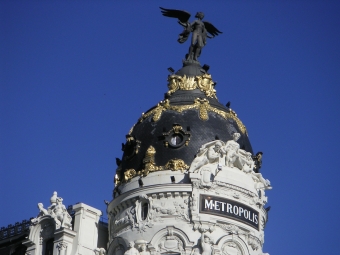
Metropolis building - Madrid
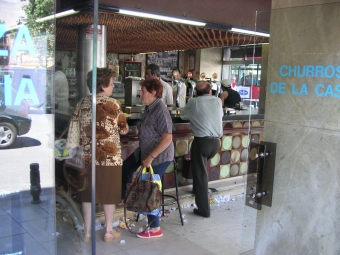
Typical bar somewhere in Spain
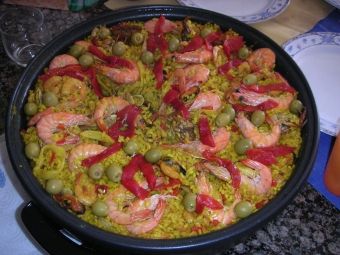
Paella

Salamanca's famous frog

Flamenco performance at the Carboneria - Sevilla
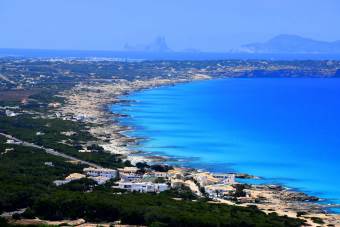
Formentera
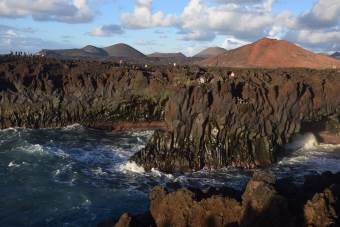
Malpais - Lanzarote
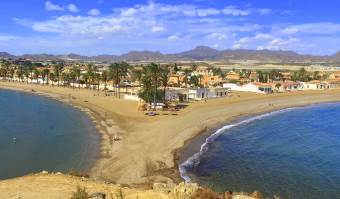
Mazarron - Mediterranean Coast